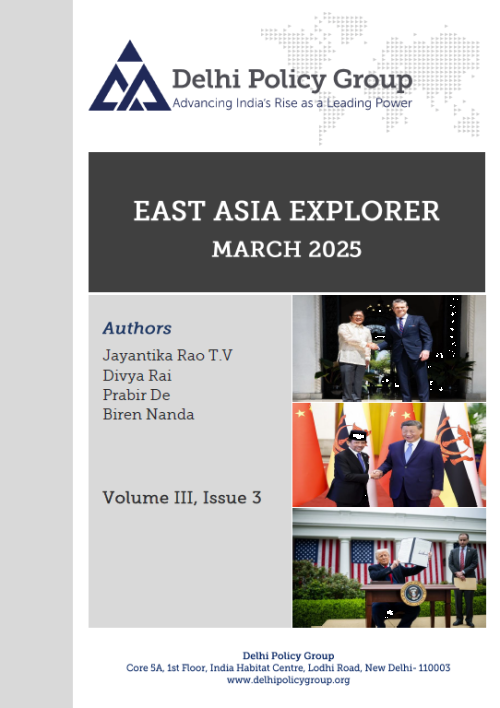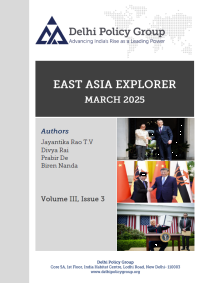East Asia Explorer
Date: April 11, 2025
The East Asia Explorer tracks evolving geopolitical trends, emerging security challenges, and progress towards regional integration in East Asia. It focuses on the ASEAN grouping, domestic and foreign policy developments in countries of East Asia and Oceania, great power contestation in the region, and India’s relations with ASEAN and its member countries.
In her brief, Jayantika Rao assesses the strengthened alliance between the United States and the Philippines, focusing on US Defence Secretary Pete Hegseth’s visit to the Philippines during his first trip to the Indo-Pacific. She highlights the key outcomes of the visit, which reaffirmed the US commitment to regional security under the Trump administration.
Divya Rai explores the diverse strategies adopted by ASEAN states to address escalating tensions in the South China Sea (SCS), particularly focusing on Indonesia, Malaysia, and Brunei. She underscores that while Vietnam and the Philippines have challenged China’s ambitions, all three nations have pursued distinct approaches combining diplomacy, legal mechanisms, and economic pragmatism.
Dr. Prabir De assesses the impact of the reciprocal tariffs imposed by the United States on ASEAN Member States and India, identifying both the challenges and emerging trade opportunities for these nations. He posits that, despite the increasing trade differences among countries globally, these reciprocal tariffs may serve to foster unity among Asian nations. As such, this scenario presents a significant opportunity to strengthen the ASEAN-India relationship, thereby facilitating the further deepening of their comprehensive strategic partnership.
Amb. Biren Nanda analyses the intricate security dynamics in Southeast Asia, emphasising the region’s challenges in managing China’s assertive actions while balancing relationships with major global powers. He points out that while many nations in the region are grappling with security concerns, all while trying to navigate economic dependencies and geopolitical pressures.
To read this East Asia Explorer, Vol. III, Issue 3, please see the PDF attached.
In her brief, Jayantika Rao assesses the strengthened alliance between the United States and the Philippines, focusing on US Defence Secretary Pete Hegseth’s visit to the Philippines during his first trip to the Indo-Pacific. She highlights the key outcomes of the visit, which reaffirmed the US commitment to regional security under the Trump administration.
Divya Rai explores the diverse strategies adopted by ASEAN states to address escalating tensions in the South China Sea (SCS), particularly focusing on Indonesia, Malaysia, and Brunei. She underscores that while Vietnam and the Philippines have challenged China’s ambitions, all three nations have pursued distinct approaches combining diplomacy, legal mechanisms, and economic pragmatism.
Dr. Prabir De assesses the impact of the reciprocal tariffs imposed by the United States on ASEAN Member States and India, identifying both the challenges and emerging trade opportunities for these nations. He posits that, despite the increasing trade differences among countries globally, these reciprocal tariffs may serve to foster unity among Asian nations. As such, this scenario presents a significant opportunity to strengthen the ASEAN-India relationship, thereby facilitating the further deepening of their comprehensive strategic partnership.
Amb. Biren Nanda analyses the intricate security dynamics in Southeast Asia, emphasising the region’s challenges in managing China’s assertive actions while balancing relationships with major global powers. He points out that while many nations in the region are grappling with security concerns, all while trying to navigate economic dependencies and geopolitical pressures.
To read this East Asia Explorer, Vol. III, Issue 3, please see the PDF attached.



